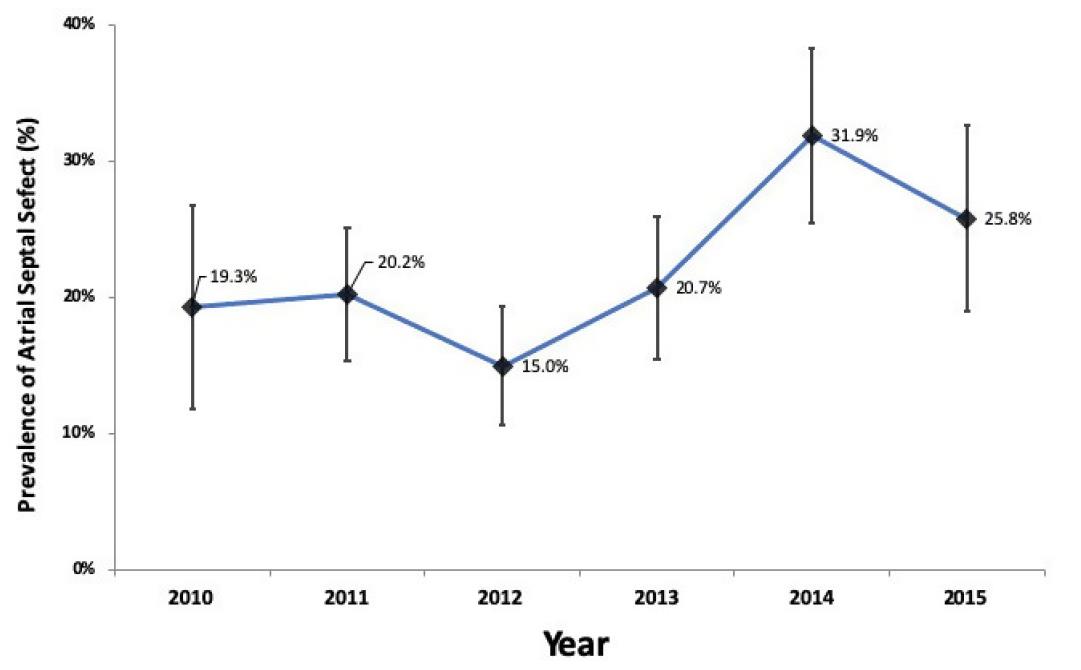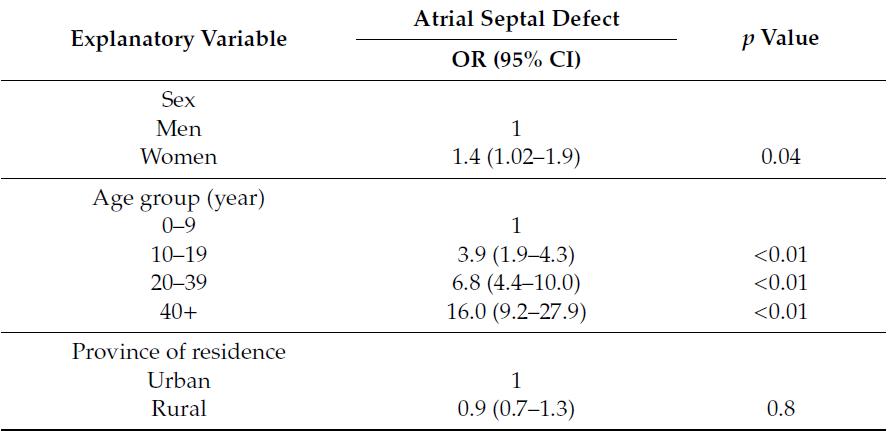Xuan Tuan H, et al. J. Cardiovasc. Dev. Dis. 2020;7:2.
Xuan Tuan H, et al., conducted a cross-sectional study to evaluate the trends in the prevalence of Atrial Septal Defect (ASD) patients and correlated elements within congenital heart disease (CHD) patients.
From 1 January 2010 to 31 December 2015, data were assembled from medical evidence from 1220 patients with CHD in Da Nang hospital. Detailed statistical data was utilized to evaluate the prevalence of ASD among in CHD patients. To compare groups and logistic regression to access associated factors with ASD, comparative statistical approaches were utilized.
During the period, the prevalence varied between periods, ranging between 15% and 31.9% (Figure 1).

Figure 1: Trends in prevalence and 95% CI of atrial septal defect among congenital heart disease patients, 2010–2015
Between 2010 and 2015, the total prevalence of ASD within CHD patients was 18.5%. As compared to men, significantly greater prevalence of ASD was observed with women within CHD (25.9% vs.16.0%). It was also detected that the prevalence of ASD enhanced progressively as the age group rises (Table 1).
Table 1: Prevalence of atrial septal defect among congenital heart disease patients, 2010–2015

It was found that ASD appeared significantly more commonly within women participants (OR = 1.4, 95% CI = 1.02–1.9) and older age group participants (age group 10–19 years old: OR = 3.9, 95% CI: 1.9–4.3; age group 20–39 years old: OR = 6.8, 95% CI: 4.4–10.0; age group 40 years old or greater: OR = 16.0, 95% CI: 9.2–27.9) (Table 2).
Table 2: Factors associated with atrial septal defect, 2010–2015: multivariable logistic regression analysis

Thus, during the period between 2010 and 2015, the prevalence of ASD within CHD patients modified throughout the years. Factors correlated with the elevated prevalence of adjusted ASD were being a woman and older in age. The outcomes recommend that a focused policy should be developed to offer more-specific health-care services of ASD for women and older patients.

